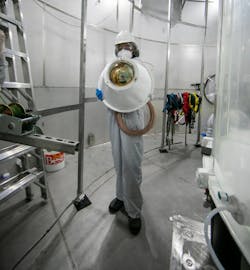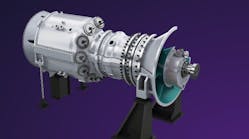Molten Core to Electrons: SURF Project Digs Deep into Geothermal's Potential Versatility
SURF’s down, and that’s good for deep and long-term geothermal energy research.
The Sanford Underground Research Facility, situated at almost 5,000 feet below the earth’s surface, is a relatively unknown bastion for experimentation around harnessing core heat to decarbonize the energy sector.
SURF is part of the latest multi-institutional geothermal research project, the Center for Understanding Subsurface Signals and Permeability (CUSSP), led by Pacific Northwest National Laboratory (PNNL) and funded by the U.S Department of Energy. The CUSSP collaboration is focused on understanding ways to produce electricity by constructing geothermal power plants in more locations.
The deepest underground research facility in the U.S., SURF is managed by the South Dakota Science and Technology Authority. It was founded in 2006 within the abandoned Homestake Gold Mine.
It’s cutting edge "deep science" and a bit of a shot in the dark, but utilizing new enhanced geothermal systems (EGS) involves cold water pumped into deep wells—sometimes as deep as 8,000 feet—where it is heated by the Earth and returned to the surface as hot water or steam that will spin a turbine for the creation of electricity.
“Developing the ability to understand the chemistry remotely with geophysical signals is very exciting, and also very challenging,” said Jeff Burghardt, an Earth Scientist at PNNL who is working on parallel geothermal research at SURF, in a press release. “It's sort of a moonshot idea at this point, but I think we have a plausible path forward to being able to do it, and that would be a game changer.”
The reality of geothermal energy’s potential is well known but recovering and harnessing that energy potential is a stickier logistical and technical issue. A report on geothermal electricity and CHP potential from the European Geothermal Energy Council notes that the overarching heat power of the earth’s crust is close to 12 octillion megajoules or something like massive amounts of Terawatt hours.
If only this could be converted into massive amounts of Terawatt hours, but only a fraction is feasibly available to utilize for human consumption.
EGS presents and deals with challenges such as the underground fractures where heat is transferred to the fluid. The water that is pumped into deep underground fractures can leave behind minerals slowing or stopping the flow, the water pipes in an old house can become mineralized and clogged.
At SURF, scientists are allowed to employ a wide variety of sensing equipment in the test bed, from water and rock temperature and chemistry measurements to seismometers and electrical resistivity sensors, to help researchers understand the scenario underground.
The ability to search for signals in the noise and correlate them with the underground activity at SURF allows CUSSP scientists to build an understanding of the complex process governing geothermal systems and create better models to be used across multiple geothermal extraction sites.
CUSSP includes a collaboration of 40 researchers assisted by many undergraduate, graduate, and postdoctoral students. Geochemists and geophysicists are working together with mechanical engineers and computational scientists to achieve the same goals.
The work at SURF supports investments at other DOE geothermal facilities like the Frontier Observatory for Research in Geothermal Energy (FORGE) in Utah. While SURF is one of 16 deep underground laboratories around the world, other labs in countries like China, Canada, Russia, Italy, and the United Kingdom are all competing for similar advancements in underground science.
Track Geothermal and all of the C&I Energy Transition
Subscribe to the free EnergyTech Transitions E-Newsletter







